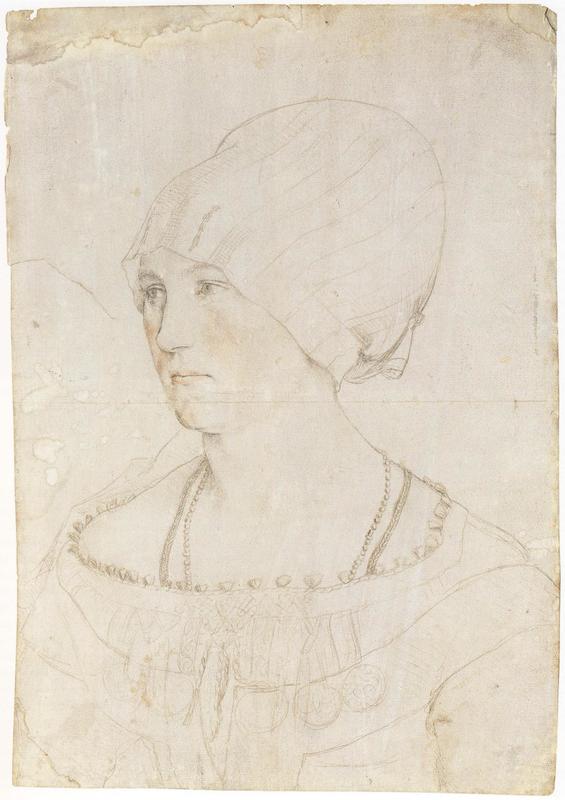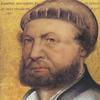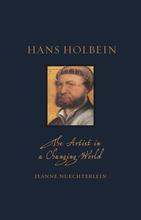More about Portrait of Dorothea Meyer, née Kannengiesser
- All
- Info
- Shop

Sr. Contributor
Hans Holbein the Younger is best remembered for his iconic portraits of Henry VIII of England and his storied wives, but he got his first big break in Basel, which had then only recently joined the Swiss Confederation.
Holbein's career was jump-started by one of Basel’s most prominent residents, Jakob Meyer zum Hasen, who commissioned a portrait of his wife, Dorothea, as a companion piece to his own.
This is not the final portrait, but one of two studies Holbein did in preparation for the formal painting. Nonetheless, Holbein’s drawings are highly prized in their own right, as art historians value his skill as a draftsman as much as a painter. He used silverpoint for this sketch, a medium he borrowed from his father, noted portraitist Hans Holbein the Elder. Holbein was only eighteen years old at the time, having only recently established his own practice when Meyer commissioned the double portrait for which this is a study. These are Holbein’s first portraits that survive, signed HH, as the painters’ guild of Basel had not yet even granted him the right to use his full name.
Though the artist produced relatively few works in Basel, Meyer’s early patronage catapulted Holbein to success. In addition to the preparatory studies and the finished diptych of the couple, he painted the Meyer family (including Jakom’s dead first wife) praying at the feet of the Virgin Mary and Christ Child in one of his most celebrated masterpieces, the Darmstadt Madonna. Meyer had ample resources to support the arts, as moneychanging had made him one of Basel’s richest citizens.
Meyer started his career as a mercenary in the lucrative service of Europe’s warring noble houses, happy to change allegiances to the highest bidder of the moment. The same year that Holbein painted portraits of him and Dorothea, Meyer became mayor of Basel, and may have commissioned these to commemorate the occasion. As mayor, he plundered the Castle of Pfeffingen and was later ousted and imprisoned in a financial corruption scandal before retiring into exile. The fashions and artistic conventions may have changed since Dorothea sat for this study, but politics seem to be the same in every century.
Sources
- “Basel, Switzerland.” Encyclopedia Britannica. Accessed June 9, 2022. https://www.britannica.com/biography/Johann-Rudolf-Wettstein.
- Buck, Stephanie. Hans Holbein. Cologne: Könemann, 1999.
- The History of Art. “Hans Holbein Drawings.” Accessed June 9, 2022. https://www.thehistoryofart.org/hans-holbein/drawings/.
- Muller, Christian. Hans Holbein the Younger: The Basel Years, 1515-1532. Munich: Prestel, 2006. https://books.google.com/books?id=vU5tQgAACAAJ
- Public Art Collection Basel. The Holbein family of painters in Basel. Kunstmuseum Basel, 1960. https://books.google.com/books/about/Die_Malerfamilie_Holbein_in_Basel…
- Stein, Wilhelm. Holbein the Younger. Berlin: Julius Bard Verlag, 1920.












